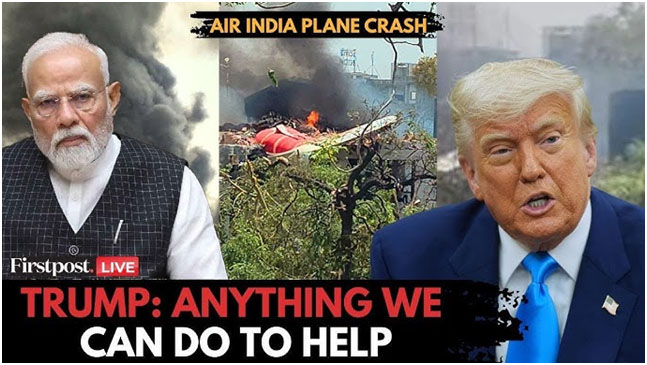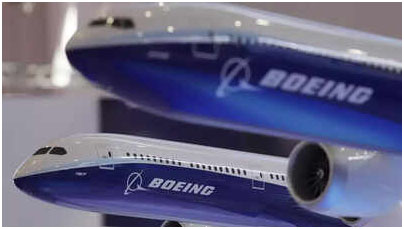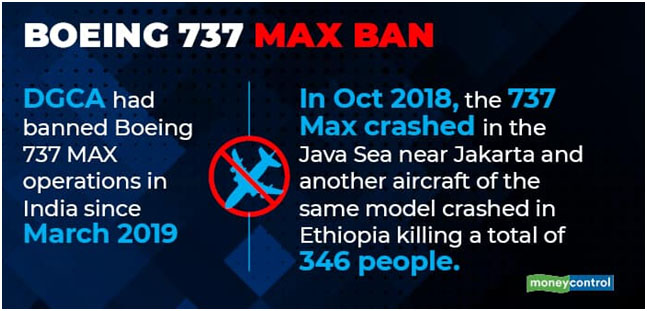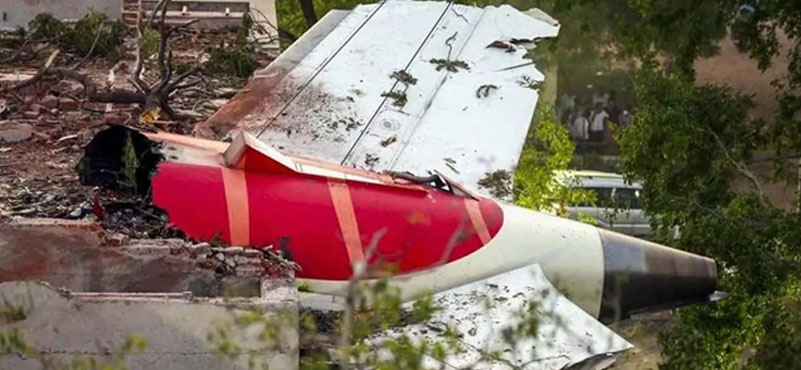1. Trade and Politics go hand in hand. President Trump has declared a special tariff war on India and Brazil. The reasons for each are very different. In Brazil, he wants President Lula da Silva to let off his old friend Bolsanaro, the former President who is currently under house arrest on charges of multiple crimes related to alleged coup be let off or face 50% trade tariffs. For India, who he calls ‘tariff king’, he not only wants reduction in various duties but wants India to open its dairy and agriculture sector for free imports from US. For India, dairy and agriculture sector are a big no as over 55% of Indian population is dependent employment from these two sectors while for US it’s just about 1.2%. He has, therefore, threatened India with tariffs of 25% and an additional penalty of 25% for importing Russia’s oil. This will certainly impact India’s growth. Trumps dictatorial orders with sudden swings are mercurial and very upsetting. India has made it clear, very rightly, that India will not bow down to such threats. Brazil has said the same. Trump has unilaterally given us some more grace time till he puts his threat into action.
2. Trump tried the same trick with China when he announced 145% tariff on Chinese imports. China replied by saying that it will not get threatened by such arbitrary and whimsical orders. However, China being a much bigger economy has greater leverage over US. But on top of all this China announced three things: it banned any new import of Boeing aircraft, it banned sale of rare earths and magnets to USA and reciprocal tariff of 125%. China has about 130 of Boeing aircraft orders pending and China has a near monopoly of rare earths. Trump realised that he has bitten more than he can chew as both these issues would have a disastrous impact on US economy and straightaway buckled down.
3. Boeing Company is a 100 year old company producing Commercial and Defence aircrafts as well as satellites. It has been in deep trouble since 2011 with two crashes of its brand new B737 MAX aircraft and very recently of its B 787 Dreamliner, its top of the line commercial aircraft, on June 12,2025 in Ahmedabad in Gujarat, India.
4. The new version of 737 series called Boeing 737 MAX entered commercial service in January 2016. A little after its introduction two fatal accidents took place in 2018 and 2019 of Lion Air and Ethiopian Airlines respectively. In the first instance Boeing managed to put the blame on the pilot but after the second accident when the deficiency of a new system/software called MCAS was proved, Boeing accepted their guilt and they agreed to pay of over $2.5 billion in penalties and settlements rather than face court proceedings. The settlements were in particular tied to Boeing’s admission to concealment of safety issues regarding MCAS. The US Senate has been very upset with the crash of the two B737 Max and had given a dressing down to its CEO in a televised Senate hearing. Besides this there have been whistleblowers within the Boeing company protesting on their cost cutting practices at the cost of safety. Some of them were not treated well by the company. One even committed suicide. US government and President Trump are very bothered about this development.
5. The catastrophic air crash which took place in India of the Boeing 787 Dreamliner belonging to Air India on 12th June 2025 at Ahmedabad airport with full fatality has become a major issue with US government and Trump as their main aircraft company is in deep trouble. The inquiry into the accident is being conducted by a duly appointed Aviation Accident Inquiry Board (AAIB) of India as required by International Civil Aviation Organisation (ICAO) with Federal Aviation Authority (FAA) of USA along with Boeing, the manufacturing company as invitees. The issue of either the pilot error or a software glitch in this highly sophisticated aircraft is now becoming a matter of contention.
AAIB presented their preliminary report on the 12th July, 2025 as an open document.
The report, was presented within a month and has come out with many details while many details have not been presented fully. As the accident was a catastrophic event and first for a Boeing 787 Dreamliner, there was a greater of speculation on the cause of the accident. The reason for the accident brought out by the Report was that the fuel switch had been turned off leading to no fuel going into the two engines and consequently, the engines took off with the initial fuel which was within it. However, immediately after the take off, as they got no fuel into the engines, it led to loss of thrust leading to its crash in the immediate neighbourhood. The report was silent on whether the fuel switch got turned off automatically or by a pilot in the cockpit, which has now become the main controversy.
6. We now need to take a view on the two hypothesis on the cause of this accident. One view taken by US media led by the Wall Street Journal (WSJ) that it was a suicidal attempt by one of the pilots due mental depression base on an undisclosed source from US government. However, no evidence has been put out by WSJ. The Cockpit voice recorder (CVR) which was found in tact, has been examined by the investigation team, has reported a conversation between the two pilots as: “In the cockpit voice recording, one of the pilots is heard asking the other why did he cutoff. The other pilot responded that he did not do so.” The three Pilots’ Unions of India are up in arms against WSJ and it is believed that they have filed a case against it.
On the other hand, it may be pointed out that in a interview to Barkha Dutt, Mary Schiavo, a highly regarded top US aviation attorney and a former Inspector General of US Transport Department, who has fought many cases of air accidents, had mentioned that in 2019 the same type of aircraft i.e. Boeing 787 Dreamliner, belonging to All Nippon Airlines (ANA) of Japan had a similar incident on landing at Osaka airport when fuel got switched off automatically due to digital softwear . However, the difference was that in case of Osaka the aircraft was landing and not taking off and therefore fuel getting switched off automatically did not lead to an accident. It was confirmed as a software glitch not a pilot error. She has categorically stated that its incorrect to blame it on pilot till the possibility of aircraft fault is removed.
7. Coming back to Boeing Company, it is now well established that they were cutting corners in their manufacturing and not following their own laid out guidelines thereby compromising safety in manufacturing aircrafts. The CEO of the company has had to face extreme grilling by Senator Hailey of US in a Senate hearing which is available for all to see on YouTube. From a dominant position Boeing has already lost to Airbus. Trump has been going around the world trying to sell Boeing aircrafts. He has managed to get commitments from Saudi Arabia, Oman, Japan, Korea, Philippines, EU, UK, Vietnam, Philippines, Indonesia and perhaps many more countries. All this is rather illusory as not many countries will follow it through.
This Air India crash has been a major upset for Boeing and the US prestige. They would like to do influence India to give it a clean report and make it pilot fault, since both died in the crash.

There is, therefore, hectic lobbying going on in US media to absolve Boeing of any mistake and save its reputation and also liability because Boeing and its associated companies like engine and software suppliers will have to face heavy penalties and even criminal cases. Under these circumstances both AAIB and National Transportation Safety Board (NTBS)- the US independent accidents investigator have issued warnings with regards to speculative analysis on this crash. General GVG Yughandhar DG AAIB issued an appeal on Thursday 17th July urging public to “refrain from spreading premature narratives,…repeatedly attempting to draw conclusions through selective and unverified reporting” and termed it as ‘irresponsible’. This has been followed by a statement from Jennifer Homendy, Chairwoman NTSB (National Transportation Safety Board) of US cautioning its media on ‘premature and speculative’ media reports.
In spite of this Mr. Bryan Bedford the head of Federal Aviation Administration (FAA) of USA has said that the fatal crash of Air India Boeing 787 Dreamliner ‘does not appear to be due to mechanical issue or inadvertent movement of fuel control unit or switches’ He has further stated, ‘we can say with high level of confidence is it doesn’t appear to be a mechanical issue with the Boeing fuel control unit’. It is unfortunate that the FAA Administrator has made this statement when the inquiry into the accident is being conducted by a duly appointed Aviation Accident Inquiry Board(AAIB) and FAA along with Boeing, the manufacturing company have been associated. The issue of either the pilot error or a software glitch in this highly sophisticated aircraft is now becoming a matter of contention. If it is a manufacturing issue then Boeing company along with its suppliers will be held responsible and it would lead to major loss of reputation and huge damages.
While the final AAIB report, which could take upto a year as permitted by ICAO, will determine the cause of the accident, it is important that DGCA India stops further import of Boeing aircraft into India on safety grounds. India should also even consider retaliatory import duties on US as currently India has no customs and only 5% GST tax on import of aircrafts . These are two leverages that we have and we should consider them seriously. However, there is a word of caution which must be stated. India has approximately 1784 aircrafts on order of which Boeing has 497 and Airbus has 1287 the two main companies manufacturing large aircrafts . Both company’s order books are full for many years. By putting a tax on US imports largely Aviation industry will be impacted as other imports can be managed from other countries. The way out for purchasing Boeing aircrafts would be what is called ‘lease buy back’ arrangement in which aircrafts are not purchased by Indian Airlines but diverted to leasing companies which are located mainly in Ireland and Singapore and now coming up in Gift City in India. This might even help airlines with immediate payments and tax advantages.
Sanat Kaul is the Chairman of International Foundation for Aviation, Aerospace & Development (India Chapter).
 The Boeing 787 Dreamliner crash in Ahmedabad highlights safety concerns linked to Boeing’s manufacturing practices, potential software glitches, and pilot-error debates. India considers halting Boeing imports, leveraging tariffs and leasing options amid ongoing investigations and US-India trade tensions.
The Boeing 787 Dreamliner crash in Ahmedabad highlights safety concerns linked to Boeing’s manufacturing practices, potential software glitches, and pilot-error debates. India considers halting Boeing imports, leveraging tariffs and leasing options amid ongoing investigations and US-India trade tensions.
US-India trade relations are strained by Trump’s tariffs targeting India’s dairy, agriculture, and energy sectors, while retaliatory measures by China and Brazil complicate global diplomacy. The Boeing crash amplifies US pressure, risking further economic and political fallout between the nations.
Boeing’s safety lapses, including past 737 MAX crashes and alleged manufacturing shortcuts, have damaged its reputation. The Ahmedabad incident raises questions about aircraft integrity, with the US and Indian authorities cautious about premature conclusions amid intense lobbying and media speculation.

The crash impacts both US and Indian aviation industries, prompting India to consider import bans or tariffs on US aircraft. Long-term solutions might involve leasing arrangements and diversification, aiming to protect safety, economic interests, and strategic sovereignty in the evolving geopolitics of aviation.








